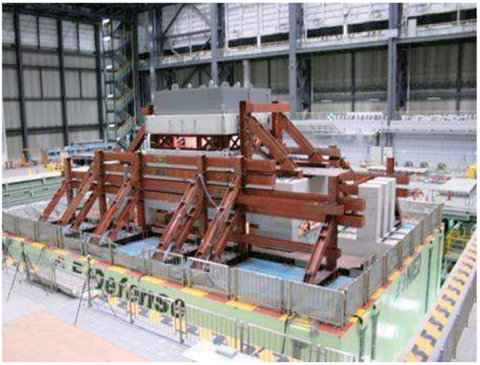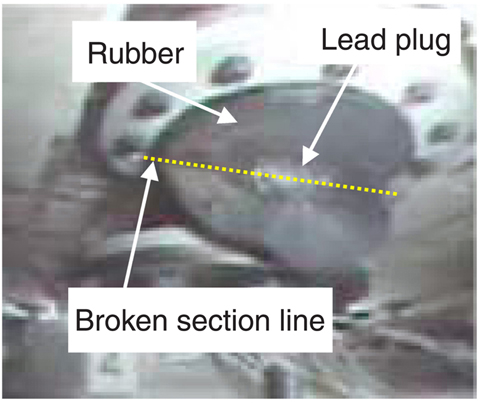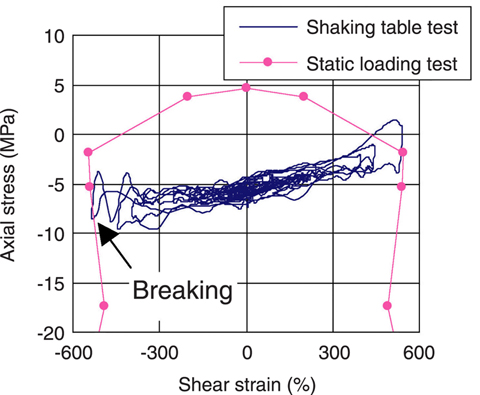
Fig.1-19 Horizontal isolation system test apparatus

Fig.1-20 Moment that laminated rubber bearing broke

Fig.1-21 Breaking strain of laminated rubber bearing
Seismic isolation technology is to be introduced into fast breeder reactor plants of the next generation in order to reduce the seismic load subjected to components. To grasp the ultimate behavior of a base isolated plant in a huge earthquake of a level higher than that considered in the design, we made ultimate behavior tests of seismically isolated FBR plants with a large shaking table, in cooperation with Central Research Institute of Electric Power Industry.
A seismic isolation effect is achieved by setting up soft springs (laminated rubber bearings) under the building so that the building may shake slowly. The relation between the load and the displacement of the rubber bearing is almost linear in the range where the load is small. A seismic isolation system is designed so that the building may also respond linearly to the seismic intensity. When the seismic load is large, the seismic isolation effect is lost because of the hardening of the rubber, which then may break. In this test, data concerning the loss of the isolation effect and the breaking behavior of rubber were obtained.
One of the world's largest three-dimensional shaking tables, "E-Defense" of National Research Institute for Earth Science and Disaster Prevention, was used to observe actual behavior of the isolation system. Fig.1-19 shows the shaking table test apparatus. The test specimen was composed of a superstructure of about 600 tons and six rubber bearings of 505mm outside diameter (about 1/3 the size of the prototype). There was seismic isolation of the ground motion on the scale considered in the design. After motion was increased, non-linear response in the hardening range and breaking of the rubber were observed. When the ground motion was amplified from 4.0 to 4.8 times the design level, some laminated rubber bearings broke (Fig.1-20). The breaking strains were from 550 to 600%, which agreed with the breaking conditions observed in static loading tests (Fig.1-21).
This breaking test of the laminating rubber bearing of a diameter of 505mm that are 1/3 of the prototype bearing was done on a scale without precedent. The risk evaluation method of seismically isolated plants will be developed based on these data in the future.